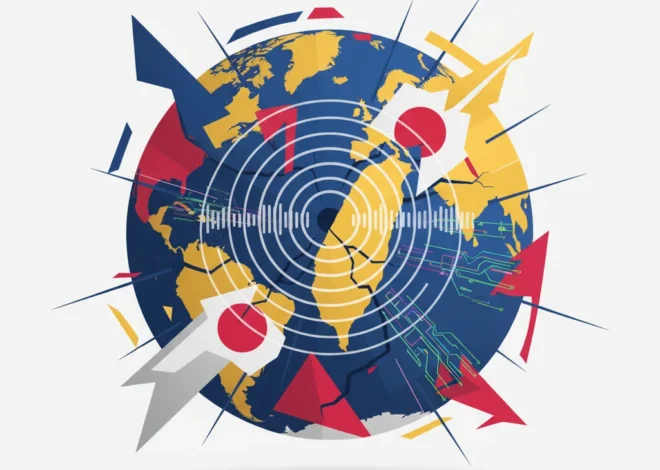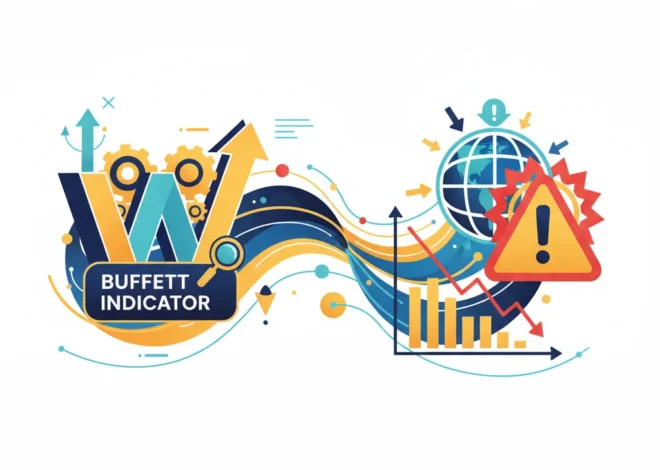
Unlocking Frozen Fortunes: The Innovative Financial Plan to Rebuild Ukraine
The Multi-Trillion Dollar Question on Europe’s Doorstep
The physical devastation in Ukraine is staggering, a grim testament to the human and economic cost of modern warfare. As the conflict continues, a parallel challenge looms large: how to finance a reconstruction effort of historic proportions. Early estimates from the World Bank suggest a cost of at least $486 billion over the next decade, a figure that grows with each passing day. This colossal sum dwarfs traditional aid packages and presents a monumental challenge for the global community. Where will this capital come from?
For months, policymakers, investors, and leaders in the global finance community have been locked in a complex debate over a tantalizing pool of capital: an estimated €260 billion in Russian Central Bank assets frozen in Western jurisdictions since the 2022 invasion. The idea of making the aggressor pay for the damage is morally and politically appealing. However, the path to using these funds is fraught with legal peril. The principle of sovereign immunity—a cornerstone of international law that protects state assets from being seized by other states—has created a significant roadblock. Outright confiscation could set a dangerous precedent, potentially destabilizing the global economy and spooking nations who hold their reserves in dollars or euros.
Now, a groundbreaking proposal, articulated in a letter to the Financial Times by a cross-party group of Members of the European Parliament (MEPs), offers an elegant and powerful alternative. It’s a solution that sidesteps the legal quagmire of seizure by employing a classic tool of finance: collateralization. The idea is simple in concept but profound in its implications: use Russia’s frozen assets not as cash to be spent, but as collateral to underwrite a massive “reparations loan” for Ukraine.
Beyond Seizure: Deconstructing the Reparations Loan Proposal
The direct confiscation of a sovereign nation’s assets is often seen as a financial “nuclear option.” It raises questions about due process and could trigger retaliatory actions, creating chaos in an already fragile global financial system. The reparations loan proposal charts a more sophisticated course, leveraging the value of the assets without immediately altering their ownership.
Here’s how this piece of financial engineering would work:
- Collateralization: The frozen Russian sovereign assets, held in Western financial institutions, would be legally designated as collateral. This doesn’t mean they are seized; rather, they are pledged as security against a new debt instrument.
- Bond Issuance: A consortium of allied nations, or a specially created international financial institution, would issue “Ukraine Reconstruction Bonds” on the global market. With hundreds of billions in solid collateral backing them, these bonds would likely be seen as a highly secure investment.
- Funding Reconstruction: The proceeds from this bond sale would be transferred directly to Ukraine, providing the immediate, large-scale liquidity needed for everything from rebuilding critical infrastructure to revitalizing its economy.
- Repayment Mechanism: The loan would ultimately be Russia’s responsibility. Repayment could come from several sources: the profits generated by the frozen assets (which are currently accruing interest), a future peace settlement that includes formal reparations, or, if Russia defaults, the eventual liquidation of the collateralized assets.
This structure cleverly reframes the legal and political debate. It is not an act of confiscation but a mechanism to ensure compensation. It asserts that while the assets may still technically belong to the Russian state, the claim of Ukraine for reparations takes precedence. Below is a comparison of this novel approach against the more contentious option of direct seizure.
| Feature | Direct Seizure of Assets | Reparations Loan (Collateralization) |
|---|---|---|
| Legal Framework | Legally contentious; challenges sovereign immunity and could be tied up in courts for years. | Legally innovative but potentially more defensible as a claim for damages rather than outright confiscation. |
| Financial Precedent | Sets a potentially destabilizing precedent, risking capital flight from Western currencies. | Creates a new model for economic statecraft, linking sanctions to reconstruction finance. |
| Speed of Funding | Slow, due to protracted legal battles over ownership. | Potentially very fast once the legal framework for collateralization is established and bonds are issued. |
| Market Impact | High risk of rattling the stock market and global financial stability. | Creates a new, high-quality asset class for investors, potentially stabilizing market sentiment around Ukraine’s future. |
| Diplomatic Message | A punitive, final action. | A conditional action that holds Russia accountable while leaving room for future diplomatic resolution. |
This approach transforms a static, frozen asset into a dynamic financial tool. It’s a testament to how modern banking and economic principles can be applied to solve the most pressing geopolitical challenges. Beyond the Cap and Gown: Why the UK Graduate Hiring Slump is a Red Flag for the Economy
What’s particularly fascinating from a financial technology perspective is the potential for implementation. Imagine a future where the disbursement of these reconstruction funds is tracked on a transparent, distributed ledger. This isn’t just a fantasy; incorporating blockchain technology could provide unprecedented transparency, assuring bondholders that their capital is being used effectively and efficiently for designated projects. This would combat corruption—a key concern for any large-scale aid effort—and could make the bonds even more attractive to ESG (Environmental, Social, and Governance) focused investors. This is the future of geopolitical finance: powerful, precise, and transparent.
The Investor’s Calculus: A New Frontier for Sovereign Debt?
For investors, finance professionals, and business leaders, this proposal opens up a fascinating new chapter in sovereign debt and geopolitical investing. The “Ukraine Reconstruction Bonds” would be a unique asset class. On one hand, they would be backed by rock-solid collateral—the sovereign assets of a G20 nation. This significantly lowers the credit risk compared to traditional emerging market debt.
On the other hand, the investment carries a significant political risk. The repayment timeline is tied to the conclusion of a war and the subsequent actions of a hostile state. The value and liquidity of the bonds would be sensitive to geopolitical developments, making them a complex instrument for trading desks to price. However, for long-term institutional investors like pension funds and insurance companies, these bonds could offer a stable, predictable return backed by a powerful moral and political imperative.
Furthermore, the success of such an instrument could reshape the entire landscape of economic sanctions. It would prove that the international community can move beyond simply freezing assets to actively leveraging them to repair damages. This could change the risk calculation for any nation considering aggressive military action, adding a new and potent weapon to the arsenal of economic deterrence. Trump's Argentina Ultimatum: How One Election Could Reshape Global Finance and Investment
The Geopolitical Chessboard: More Than Just Money
The strategic implications of the reparations loan are immense. It sends an unequivocal message to Moscow: the West is prepared to use Russia’s own wealth to rebuild what it has destroyed, and it will not wait for a peace treaty to begin. This shifts the economic burden of the war squarely back onto Russia, creating internal pressure and undermining its long-term economic stability.
Crucially, it also provides a sustainable, long-term funding solution for Ukraine that is not solely reliant on the goodwill of Western taxpayers. This is vital for maintaining political support for Ukraine in the US and Europe, as it frames the reconstruction not as aid, but as enforced restitution. It aligns the financial interests of the West with the recovery of Ukraine, creating a powerful, self-reinforcing dynamic.
Of course, there are risks. Some nations, particularly China, may view this as an overreach of Western financial power and accelerate efforts to de-dollarize and create alternative financial systems. Proponents argue, however, that the unique circumstances of Russia’s unprovoked and flagrant violation of international law justify this unprecedented step. The action is not aimed at any country that abides by international norms, but specifically at a state that has broken them so violently. The Point of No Return: Why Climate Tipping Points Are Reshaping Global Finance and Investing
The Path to Implementation: A Labyrinth of Law and Politics
While the concept is powerful, the road to implementation is complex. It would require a united front from the G7 nations to establish the necessary legal frameworks. Lawyers would need to craft legislation that can withstand inevitable challenges in international courts. Central banks and financial regulators would have to coordinate to manage the operational aspects of collateralizing the assets and overseeing the bond issuance.
The political will to see this through will be the ultimate test. As the MEPs’ letter states, the EU, where the majority of the assets are held, has a unique responsibility to lead. If successful, this initiative will not only provide a lifeline for Ukraine’s future but will also carve out a new doctrine for international economics, one where financial power is used not just to punish, but to rebuild and restore.
The debate over frozen Russian assets is at a critical juncture. The world is watching to see if the international community can move from a position of passive sanction to one of active, creative, and decisive financial action. This reparations loan proposal may be the key that finally unlocks the frozen fortune needed to secure a prosperous and independent future for Ukraine.


